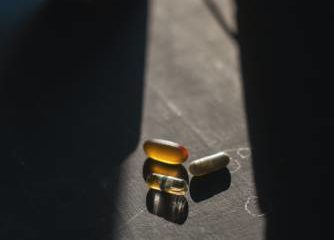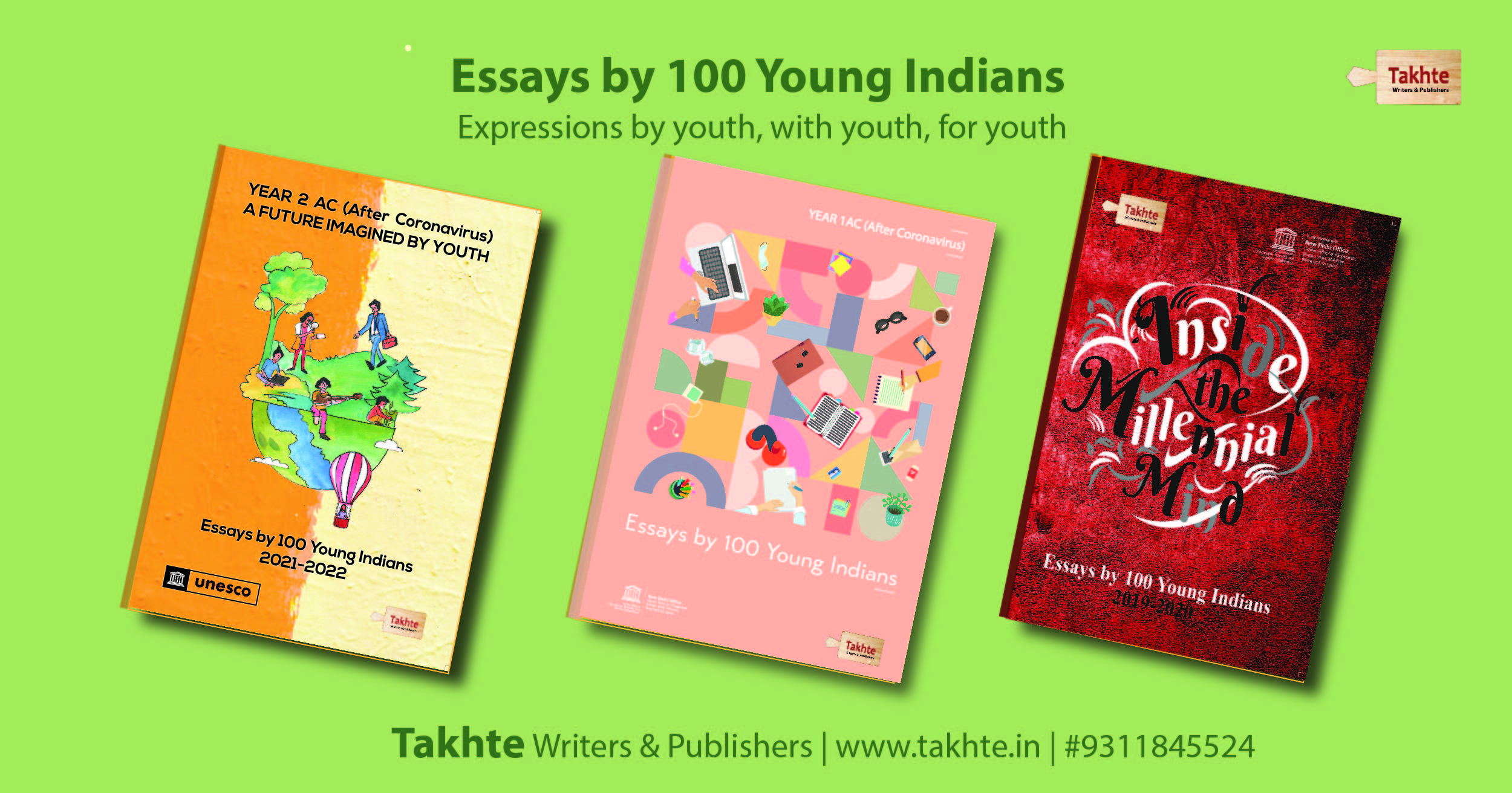Nature’s Lap
Saving Blue from Getting Marooned
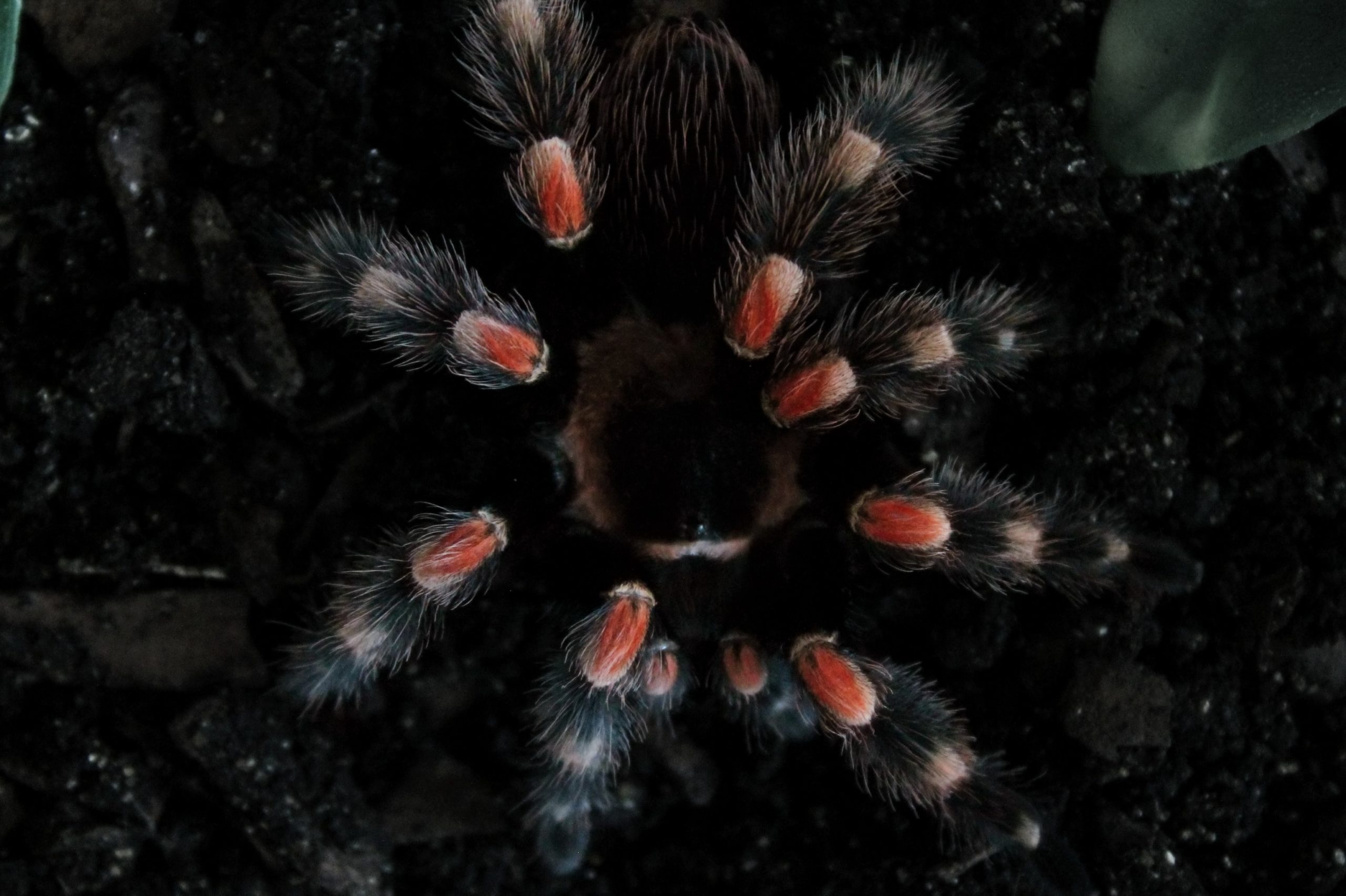
Yazhini Sathiamoorthy
Stanes School, Coimbatore, Tamil Nadu
Salutations! I am doing a double namaste for you. Since we are miles away from each other
and not on a video call, you might be wondering who I am. Let me help you guess the
answer.
First clue: I never need to worry about getting ready for a video conference because I always
look perfect – dressed up to the nines, or rather eights! Also, in spite of having dense hair,
there is no need for me to comb it.
Don’t know who I am? Fine, second clue: Just like the Kohinoor diamond that had been
snatched from India, I am a shy sapphire that was smuggled to Europe. Still no idea? Well
then, last clue: Had I been a bird, I would have been no less than the National Bird of India.
Whether you got the answer or not, I am going to reveal my identity now because I have little
time left. I am the Peacock tarantula, also called the Gooty sapphire tarantula, the rarest
tarantula in the world. Hey, hey! Don’t stop reading because you are an arachnophobe and
don’t shut me up in a glass box to keep me as your pet either. I have many things to tell you.
So, just cling on with your four limbs and read on! Ummm if you find that difficult, grab a
chair and pay attention to what this eight-legged quizmaster-turned-teacher is telling you
today.
Tarantulas are large spiders measuring up to 20 centimetres in length. Almost all species
are very hairy. But my hair differs from your hair in two main ways. First of all, my hair is not
real ‘hair’. Those of you who are now thinking that spiders must be wearing wigs are wrong.
The extensions of a tarantula’s exoskeleton or cuticle form its hair, while mammalian hair is
composed of protein. The second difference is that while humans style their hair to make it
look attractive, tarantulas want their hair to be as repulsive as can be in order to deter
predators which harbour intentions of making a meal out of us. For your information, hair is
not exactly tasty (I have not tasted it though).
But for some humans, my hair is not skanky enough and nor is my venomous (but not fatal)
bite formidable. I will come to that later. What might surprise you is that despite of being so
beautiful, perhaps the prettiest tarantula due to my vibrant electric blue colour, I am a
reticent person. I love trees, and I furnish holes and rock crevices with fine silk in a funnel
fashion and live inside them. My first instinct on sensing danger is to run away and hide in a
hole or something. I resort to biting only when I have no other option. Many kinds of insects
feature on my menu. I do not like being in the limelight both because my body is
photosensitive and also, unwanted human attention stresses me out.
Human scientists have still not yet found out why I am blue in colour. Is it a blue warning
signal, or a ‘red’ signal as you might like to call it? Is it my wedding attire? They are
perplexed about it, much to my pleasure. But I know the secret behind my blue colour, and I
am obviously not going to reveal that to you. Better become an arachnologist and figure it
out yourself! Also, please do not deposit me in your bad books just because I am repeatedly
saying that blue colour makes me the most beautiful arachnid. I am not a racist, and there
are many other differently-coloured spiders out there – black, white, green, brown, yellow
and much more! Plus, I offer full moral support to the Black Lives Matter movement.Surprised at my current affairs knowledge? Unfortunately, I have become a cosmopolitan
spider, although I am native to India. I live in a very restricted place of less than 100 square
kilometres in a reserve forest in Andhra Pradesh and patches of the Eastern Ghats. That is a
small area, indeed, and it is being diminished further by felling trees. Habitat destruction and
deforestation spell doom for my species. Also, armed human operations that have been
happening in my home steal the essence of nature. I feature on the IUCN (International
Union for Conservation of Nature) Red List as Critically Endangered.
By the way, my scientific name is Poecilotheria Metallica. But vehicles which look more
metallic and have more legs than me come into my place and raze the trees. As a result, our
small yet satisfying home has turned into a slum, with many of us being forced to share the
same tree. Not that there are many Peacock tarantulas left. IUCN has described our
population as Decreasing.
Since the present is quite unpleasant, let me tell you a bit about my history. I was discovered
by Reginald Innes Pocock in Gooty in 1899 and hence my name, Gooty sapphire tarantula.
But that was not exactly my ancestors’ adda. My great-great-great-great-great-great-great-
great-great grandmother (females live for about 12 years while males for only a couple of
years) had actually climbed onto a pile of logs and got a free ride and a rather bittersweet
welcome to the human world in Gooty. Her home was in the forest between Nandyal and
Giddalur. But she is now preserved in a British museum. It took 102 years for researchers to
come across another Peacock tarantula and they saw my grandmother in 2012 and that too
in Villupuram in Tamil Nadu! Scientists have come across me only twice since my discovery.
But many unforeseen happenings took place during this time. What happened was that
many of my friends had been smuggled abroad, captive-bred and sold to be kept as pets.
Let me warn you right now: I do not make a good pet and handling a sedated cum stressed
spider in artificial conditions is not a brave act at all. I just don’t understand what humans are
trying to do by driving harmless house spiders out of their houses or killing them and instead
of catching or buying endangered tarantulas like me and feeding us with foreign insects!
Like I said, my actual home is in a forest in Andhra Pradesh, and I am called Sale-purgu in
Telugu there. For those of you who know Hindi, please understand and make others
understand that it does not translate into ‘sale-par-hoon’. As far as I am concerned, I am
strictly not for sale. Woefully, if you Google me, you get search results like ‘peacock
tarantula for sale’. When you look for me on YouTube, you will get head-splitting tutorials on
how to take care of a ‘dangerous darling’ that is, me. This is for all my social media fans: All
living creatures know how to take care of themselves and do not need help from humans as
long as their habitat is undisturbed. I belong to myself, and my heart belongs to India.
Tarantula enthusiasts might as well help in reintroducing tarantulas in their wild habitat
instead of paying a fortune to buy them online and keep them as pets.
I forgot to tell you that I have another name too – Peacock parachute spider because I can
glide like a parachute from one tree to another and land on the ground if I want to. What
Spiderman does on skyscrapers, I do on trees. I often wish my friends could come back from
the continents where they currently are, floating over the blue sea like blue parachutes. Just
like Indian humans stranded in foreign countries were brought back to India during the initial
days of the COVID-19 pandemic, I hope that Peacock tarantulas too set all eight feet in the
place where they naturally belong and which suits them the best, and are given the basic
right to live in peace. I will be waiting for them.

Nature’s Lap
Mother Earth wants her answers
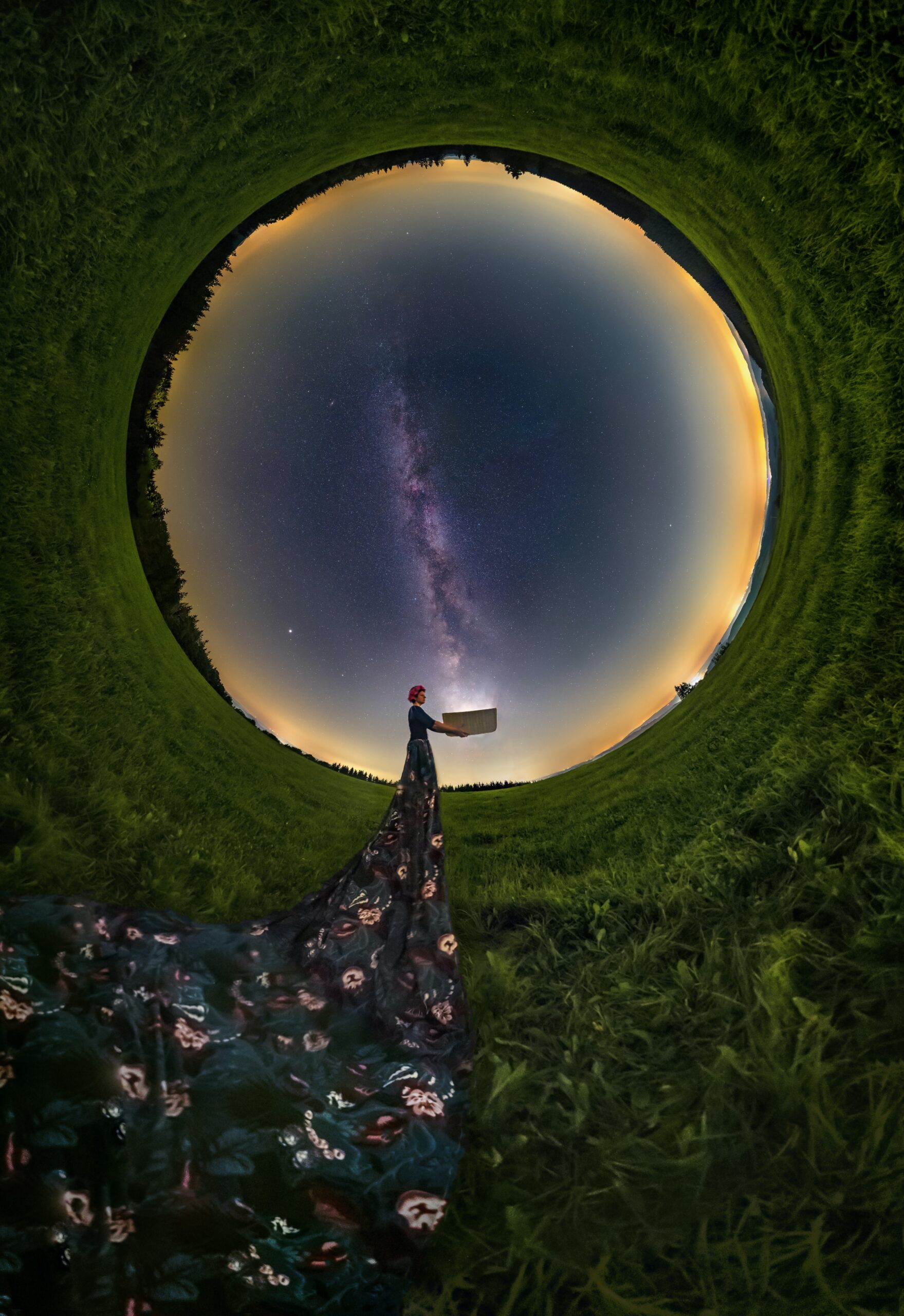
Students of Alpine Public School Nalagarh
Mother Earth gives her gift to all to share.
She gave it freely, yet she was aware,
Things are changing, perhaps for the worse.
How much more can she give if our future is cursed?
It’s way past time to put Mother first,
To clean up the water before the end,
To clean up the air before my lungs sicken,
To renew the soil and feel it quicken
How long until the point of no return?
How much longer until we all finally learn?
To accomplish this task, we all must rise and
stop abusing Mother Earth before she dies and drops
The time to take action is now.
To restore what’s been damaged in some way
We stand on a brick of “too late,” but there’s still time to change our fate.
Kritika Bhadouria
Alpine Public School Nalagarh
Class: 10-D
I am the Earth
I am the Earth.
I am mother earth,
I am the one who gave you birth.
To everything that lives,
The beauty of each one
Gives.
I am the giver of earth,
I am the one who gives you water, soil, air, and the sun.
But in return, you give me pain.
Still, I am quiet.
I am your mother.
and you are my child.
I am an Earth,
I am the one who gave you birth.
Save water and plant a tree.
Let us make a wonderful home for you and me.
Leave the fire,
and leave the ice,
All of these are
unmindful desires
I am an earth; I am the one worth.
Don’t throw the waste away.
and fill me with filth.
Make use of it and recycle it
I am the Earth,
I am the one who gave you birth.
Prashant Singh
Alpine Public School Nalagarh
Why are you destroying me?
Why are you destroying me? I am your mother earth.
Why are you polluting me when you don’t know my worth?
Your life is impossible if I don’t give you land for birth.
Then why do you ruin me for your personal growth?
Because of your foolishness, such circumstances came into my beautiful world.
You cut down all the trees and pollute this paradise-like world.
You capture all the creations in your zoo’s world.
You started hunting animals and started ruining their world.
Please stop pushing up greenhouse gases and don’t make me lose my essence.
Let’s plant together and make me a paradise.
Sakshi
Alpine Public School Nalagarh
Class-10-D
Photo courtesy Evgeni-Tcherkasski-Unsplash.jpg
Nature’s Lap
Arthropods and Anthropos
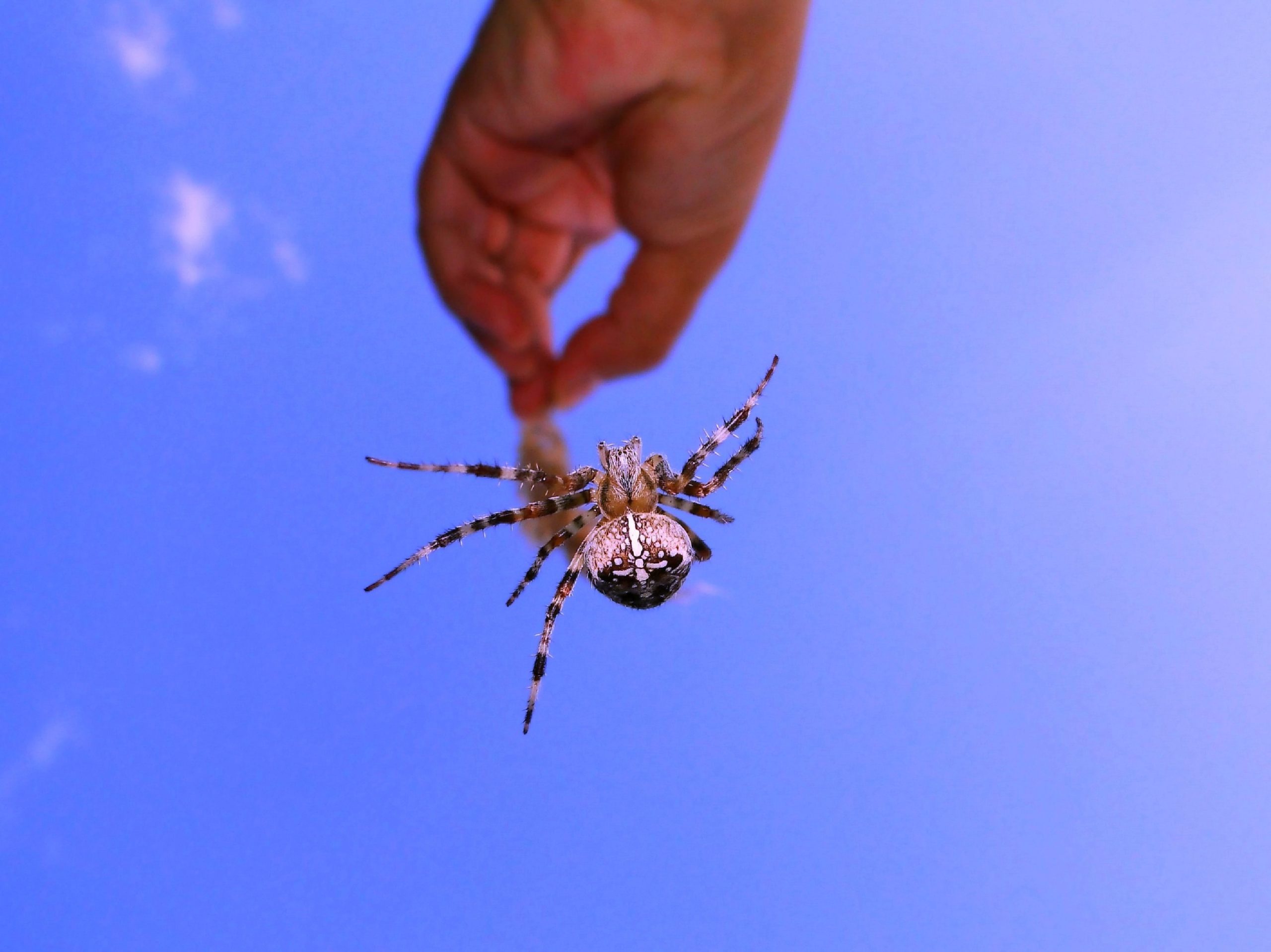
Yazhini Sathiamoorthy
Stanes School ICSE/ISC, Coimbatore, Tamil Nadu
My ignorance in the kitchen resulted in me being given more interesting things to do, such as plucking curry leaves for cooking. The plants were a little away from our house on the farm and the journey by foot to get a bunch of curry leaves is an exciting one. A curry-leaf errand or not, that place is one of my favourite haunts!
With my eyes scanning my path and the tree trunks around, I reached my destination. As I started plucking, I saw some pairs of eyes directed at me. The ‘some pairs of eyes’ did not belong to different creatures; they belonged to someone with four pairs of legs. Yes, a spider! It was a Two-striped Jumping Spider, about the size of a five rupee coin. I carefully plucked the slender branch on which it was sitting. The spider moved around a little bit, going under one of the leaves and then coming up again. Now, it seemed to be looking at my hand, which was holding the bunch of curry-leaf branches.
“If you want to live and thrive, let the spider run alive.” – Spanish proverb.
The spider which was in my custody is infamous for totally wrong reasons. There are several WhatsApp forwards on the Two-striped Jumping Spider, which often resurfaces, claiming that this Indian spider, now all over the world, has a venomous bite that can kill humans. Such false news leaves both arachnophobes and arachnologists in distress. The very same spider was with me. It is a non-dangerous spider and its bite can cause no significant harm to humans.
Why are some people so afraid of spiders and insects? Before that, let’s clarify certain stuff first. Spiders are not insects. Spiders and scorpions fall under Class Arachnida while butterflies, moths, cockroaches, ants, beetles, bees and wasps (all having three pairs of legs) comprise Class Insecta. Centipedes and millipedes form Class Myriapoda and Class Crustacea primarily consists of crabs. All of these classes together form Phylum Arthropoda.
So, going back to my initial question and amending it: Why are some people afraid of arthropods? Is it because of the extra number of legs? Is it because they bite or sting? Noted historian Yuval Noah Harari says in his book Sapiens that we humans (or Anthropos) started disliking arthropods ever since the advent of agriculture. The Agricultural Revolution made us examine arthropods and many other creatures through the lens of suspicion. Some of them are nasty pests, of course, but many of them are harmless and some immensely helpful. Nonetheless, we had decided to shun most of them.
Several arthropods deserve to be disliked anyways. Take mosquitoes for instance. Some mosquitoes don’t let us sleep peacefully at night and others drive us crazy during the day. There are more serious reasons too: Mosquitoes are the world’s deadliest animals for humans because they are vectors for malaria, dengue, chikungunya, filariasis and so many other diseases. One of the United Nations’ Sustainable Development Goals is to “end the epidemic of malaria in all countries by 2030.” Houseflies are considered enemies to public health and arachnids like ticks and mites are responsible for spreading zoonotic diseases like the plague from livestock to humans. Lice and bedbugs are abominable ectoparasites. Many arthropods are dreadful agricultural pests and the locust invasions in 2020 have left us in no doubt of that. According to the Food and Agriculture Organisation (FAO) of the UN, 20-40% of global crop production are lost to pests (including nematodes and other pathogens apart from arthropods). For many, just a cockroach in the house is the last straw. “Why do these creatures even exist?” one might ask in disgust.
“If all mankind were to disappear, the world would regenerate back to the rich state of equilibrium that existed ten thousand years ago. If insects were to vanish, the environment would collapse into chaos.” – E. O. Wilson.
Just like there are heroes and villains among humans, there are heroes and villains among our arthropods too. Even mosquitoes are not altogether bad as they serve as pollinators and as food for many other animals. But since we need to control the population of mosquitoes, we should switch to insect-friendly methods of doing so. Damselflies are insects that resemble dragonflies but are different. The former close their wings when perched while the latter keep their wings outspread. Now, these damselflies live near lakes, feast on mosquitoes and are good pollinators too. Similarly, ladybugs feed on nasty agricultural pests like aphids. Farmers buy them by the sack and release them in their fields for their bio-control services. Spiders are very decent murderers that keep the populations of many insects under control. Even the much-despised cockroaches curb the spread of many bacterial diseases by eating leftovers. Some scientists say that it would be better for Earth if humans consume insects instead of meat. But I suppose it would take a long time before many of us accept this idea.
We can never be grateful enough to bees, wasps and hoverflies (which mimic bees and wasps but cannot sting). Plants account for the highest biomass on Earth and they certainly owe this to arthropods, especially pollinators, which have the highest biomass in the Animal Kingdom. So many creepy-crawlies: does that sound scary? The sad fact is that arthropods are facing a huge threat from Anthropos. Now, this is scary.
When was the last time you heard an insect-orchestra, the sounds of crickets and cicadas? How many butterflies did you spot during the past week? Maybe you did not notice them but people, scientists and researchers who have been observing and studying them say that they are in peril. All animals, including arthropods, are being marooned due to forests getting converted into farms and then into cities. What’s worse here is that we have very limited data on arthropods. So, we don’t even know the rate at which they are disappearing, but scientists warn that it is pretty rapid.
Not only that but the creatures we particularly find repulsive are expected to multiply because global warming or rise in temperatures favours insects. It is feared that mosquitoes would increase manifold and lead to a 100% rise in deaths due to malaria in sub-Saharan Africa. Agricultural areas might end up swarming with locusts, instead of bees. Climate change might also lead to the evolution of more aggressive spiders. That is true, bad news.
“Teaching a child not to step on a caterpillar is as valuable to the child as it is to the caterpillar.” – Bradley Millar.
I would also say that teaching kids and adults alike to stop fearing arthropods and to start observing them instead is beneficial for arthropods, Anthropos and the Earth. I have seen that people who are frightened of arthropods are too frightened to even approach them and people who are not are just brave enough to squish them. I was really scared of insects when I was small, so much that I thought twice before touching the photograph of a centipede or a spider in an encyclopaedia! Now, I am hunting for field guide books on arthropods.
But before talking about identification guides, people with entomophobia (fear of arthropods) would want to get rid of their fear first. So here is a list of stories/poems/books which helped me find my inner entomophile (someone who likes insects)! Most of them are for children but can be ice-breakers for anybody willing to redefine their relationship with these much-misunderstood creatures.
- James and the Giant Peach is a classic story by Roald Dahl with quirky illustrations by Quentin Blake. “… He was beginning to like his new friends very much. They were not nearly as terrible as they looked. They weren’t terrible at all. They seemed extremely kind and helpful…” This is exactly how one would feel while reading this book through James’ eyes. James is an orphan who is also scared of creepy-crawlies, but he very soon learns about them, from them, by making friends with them. Someone with a keen interest in biology might find factual errors. Nevertheless, Roald Dahl gifts these creatures charming personalities in this book.
- The Big Race by Ruskin Bond is a part of the collection The Road to the Bazaar. Short and crisp, this story is about a ‘beetle-race’ organised by a bunch of ambitious kids. “Koki gazed in rapture at the new beetle – or was it a cockroach? She stroked its back with her thumb. The insect didn’t seem to mind.” Well, not everybody might like the idea of catching beetles and racing them against one another but it is undeniable that Ruskin Bond makes apt observations and passing mentions of many animals in most of his stories.
- Just Like a Bug by Anushka Ravishankar is the third book in the Zain & Ana series with enchanting illustrations by Shilo Shiv Suleman. It features the following characters: Zain and Ana who are not interested in insects but become entomophile in the course of the story, Gopi, their new-found friend who is an entomophile aspiring to become an entomologist, Dr Dhondy, a mysterious man who is an entomologist himself and of course, lots of insects including ants and butterflies. The children’s observations, plans and predictions are a treat to read!
- Charlotte’s Web is a touching story by E.B. White, illustrated by Garth Williams and published in 1952. Charlotte is a spider who does everything she can to save Wilbur, a pig from being slaughtered. I owe letting go of my fear of spiders to this book. After reading this, probably every spider sitting on its web with an egg sac would remind one of Charlotte.
- Song for a Beetle in a Goldfish Bowl is a funny yet thought-provoking song for a beetle in a goldfish bowl again by Ruskin Bond. The poem conveys his thoughts and actions towards the beetle and its pitiable condition in a subtle way, with a foot-tapping rhythm.
- Jungle Folk is a humorous and informative account of Indian birds by British naturalist Douglas Dewar, first published in 1912. Although critters are not in the spotlight in this book, one almost feels bad for them, especially for the spiders through Dewar’s arresting style. No spoilers here!
- God of Small Things, as you might already know and even have read, is Arundhati Roy’s Booker-prize-winning 1997 novel with “furred moths and icy butterflies.” Full of graphic observations of life including smaller forms on which the story heavily relies, the author has described nature in an unpolished way. The twins’ grandfather being an Imperial Entomologist caters to our interest here. Although sometimes, the scene takes a grotesque turn as when Rahel smashes a small army of ants with a stone, just for fun.
- The Ants and the Pen is a picture book by Irdies Shah illustrated by Prashant Miranda, which explores the explorations of a troop of ants. Giving it a read will surely brighten up your day.
Once one stops being afraid of spiders or grasshoppers or whatever, the rest is easy; critters turn out simply too interesting to be ignored. The world can have enough entomologists and arachnologists (and lepidopterists and myrmecologists and acridologists, the list is so long) only when we start making friends with our amazing arthropods.
I walk back home holding the bunch of curry leaves and the precious Two-striped Jumping Spider on it.
“It took you so long,” my mother said.
“Yes, because I found this little guy on that plant. Look.” I replied, showing the spider to her and then proceeding to leave it on another plant.
“Fine,” she said, “Will you also get me some green chillies from there?”
“Sure, why not!” I grinned.
Nature’s Lap
When We Met the Deodars
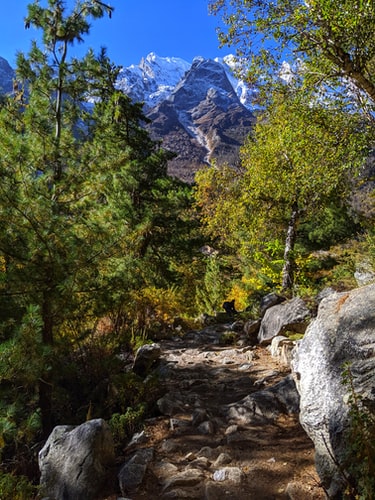
Devika Singh
Delhi Public School, Sector-45, Gurugram
The whitewashed house curved like a Spanish dream with green doors and a single wind chime in the veranda. The taxi driver tilted his head back, and I could tell he was quite proud of his homegrown Mussoorie mind maps although I still claim much credit was due to some of the older locals. Even now, as a young adult, I cannot quite believe the charm of such a cottage appealing to one of the world’s most famous authors. But charming it was, with the deodars looking on as dignified faerie sentinels to the house that seemed a most cherished child of earth, far away from the rest of all of us.
‘How long must I wait?’ the driver now took the whole affair in his prestige, “I haven’t got all day, madam and sir’, this last part directed to my equally flabbergasted parents. Though, all the curiosity of seven whole years, my brother looked at it all as he would at any great monument. All of my spirits seemed to squeal giddy out of my body with every step to the gate and up the stairs. I can remember the door’s exact green because I bored my eyes into it after ringing the bell and when it was swung open by his son, I let my father do the talking. I chimed in with some quips of politeness, but I couldn’t tell you what I’d said any more than I could gather my nerves back then.
‘I’m afraid you’ve caught us on a bad day. He isn’t feeling his best, ‘said his son, ‘although he’s humbled that you’ve come from Delhi. I might get you a signature though; do you have a piece of paper?’
The little travel journal now sits in my closet, encasing all my childish poetry and whatnots, but a single page was torn out to be glued in my diary. I wondered if the trees had disapproved of my absurdly sudden visit. I wished their family the best and looked at stilted rooftops near Domo’s café a little differently. Or perhaps, a little more similar to how Ruskin Bond lived it.
*****
My mother, our designated guide to all the sunset points in Mussoorie, named the next destination to mark the evening’s end. This particular attraction brought on a passionate monologue from our driver. The soliloquy was very welcome if not polished but are not all good things, incredibly joyful when spoken of with careless warmth?
“Brilliant choice, madam, Char Dukan is famed for its sunsets and its chai, all the same, you’ll see this great spiralling white structure that kisses the sky but don’t climb it, any of you who may have vertigo; a big, black telescope too but I’m afraid it stopped working some years back. I know the man who owns it, of course. But do you know how it came to be so important at all? Not many people know, I’m sure otherwise I’m sure it’d be more crowded all year round.”
Mother knew, of course. There was less she didn’t; though she let our self-anointed guide have the honour of shocking us all. My father whipped his head back at us three in the faux leather seats so violently; the ramshackle little black car was veered sideways by the blindsided driver. The commotion was certainly not helped by the seven-year-old screeching at the top of his lungs.
“Sachin Tendulkar? The Sachin Tendulkar? I can’t believe we’re on the road he must’ve driven on.” “He spent his childhood around these trees, and that little shop is quite his personal favourite, so take a good look now, all of you.” And so, we did.
The roads were decidedly the same, as were the mountains but the pinecones hung in the air as if mid-song and the trees looked expectant. It was all the same but entirely new all over again. It cannot be déjà vu if one sees and hears the love of great men echoing off the same cliffs’ valleys. Then beauty cannot be in the eye of the beholder, but rather in lapping thoughts of all whom we meet and admire. Science proclaims your centre of gravity moves with motion and the roads winding uphill atop the green Mussoorie peaks give a heart lurching jump which may be thus explained.
We reached the quaint shop and the telescope, a few meters away from it. It nestled among the clouds but was no different from other beautiful scenic routes I’d seen before. But there was that there, in the easy laughter of the school children and the smiling men and women, the quintessential personality belonging to the ground itself; before that, I associated such silent loudness of a place only in my own beloved Delhi. Mussoorie was, from that moment on, a topsy-turvy labyrinth of hotels, greens and naked rock. It was a shy, new home.
-

 Poems3 years ago
Poems3 years agoPoems
-

 Uncategorized2 years ago
Uncategorized2 years agoOnline Elocution Contest
-
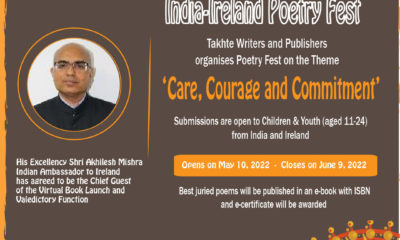
 Poems2 years ago
Poems2 years agoIndia-Ireland Poetry Fest
-

 Legal Talks3 years ago
Legal Talks3 years agoCompliances Relating to the Commercialization of Electronic Devices
-

 Legal Talks3 years ago
Legal Talks3 years agoCUSTODIAL RAPE IN LIGHT OF THE MATHURA GANG RAPE CASE
-
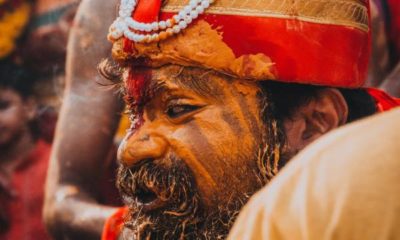
 Art & Culture3 years ago
Art & Culture3 years agoThe Lore of the Days of Yore: Significance of History
-

 Short-story3 years ago
Short-story3 years agoBibek’s visit at his friend’s bungalow
-
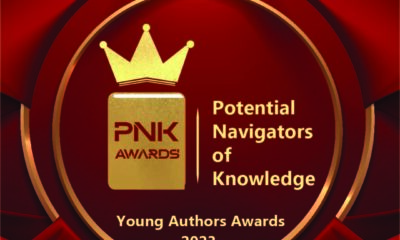
 Uncategorized1 year ago
Uncategorized1 year agoPotential Navigators of Knowledge (PNK) Young Authors Awards









